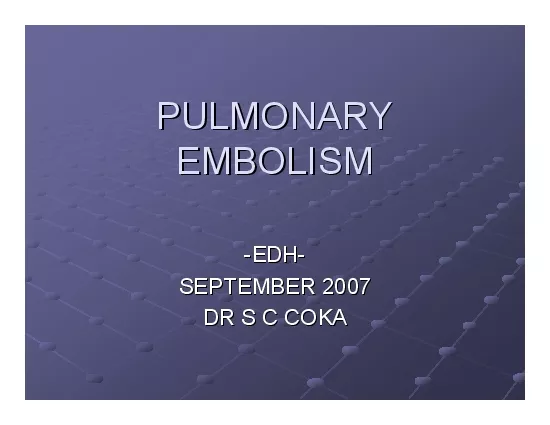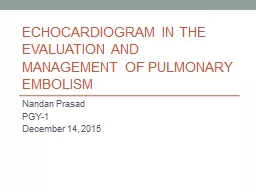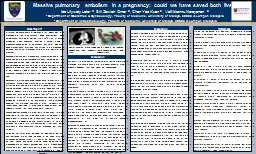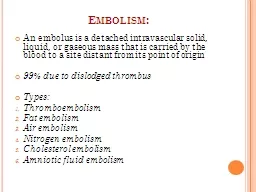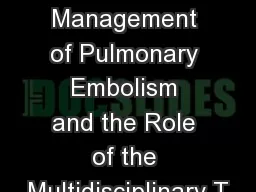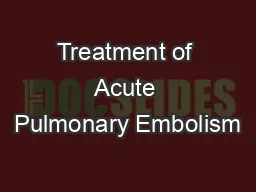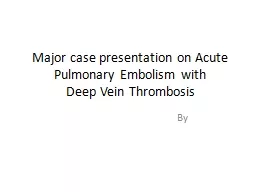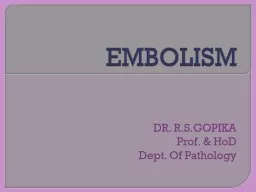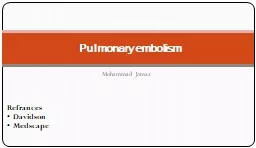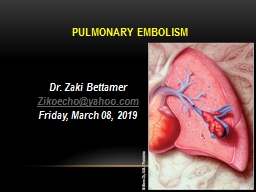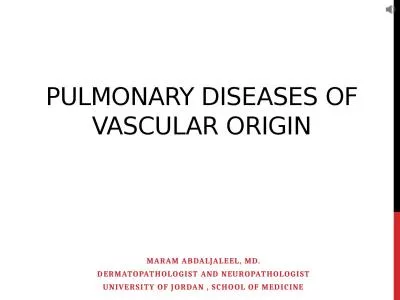PDF-PULMONARY PULMONARY EMBOLISM EMBOLISM EDHSEPTEMBER 2007SEPTEMBER 200
Author : jasmine | Published Date : 2021-08-08
CASE PRESENTATIONCASE PRESENTATIONMrs N Mkhize 51 yr old presented withMrs N Mkhize 51 yr old presented withShortness of breath for one days durationShortness of
Presentation Embed Code
Download Presentation
Download Presentation The PPT/PDF document "PULMONARY PULMONARY EMBOLISM EMBOLISM ED..." is the property of its rightful owner. Permission is granted to download and print the materials on this website for personal, non-commercial use only, and to display it on your personal computer provided you do not modify the materials and that you retain all copyright notices contained in the materials. By downloading content from our website, you accept the terms of this agreement.
PULMONARY PULMONARY EMBOLISM EMBOLISM EDHSEPTEMBER 2007SEPTEMBER 200: Transcript
Download Rules Of Document
"PULMONARY PULMONARY EMBOLISM EMBOLISM EDHSEPTEMBER 2007SEPTEMBER 200"The content belongs to its owner. You may download and print it for personal use, without modification, and keep all copyright notices. By downloading, you agree to these terms.
Related Documents

